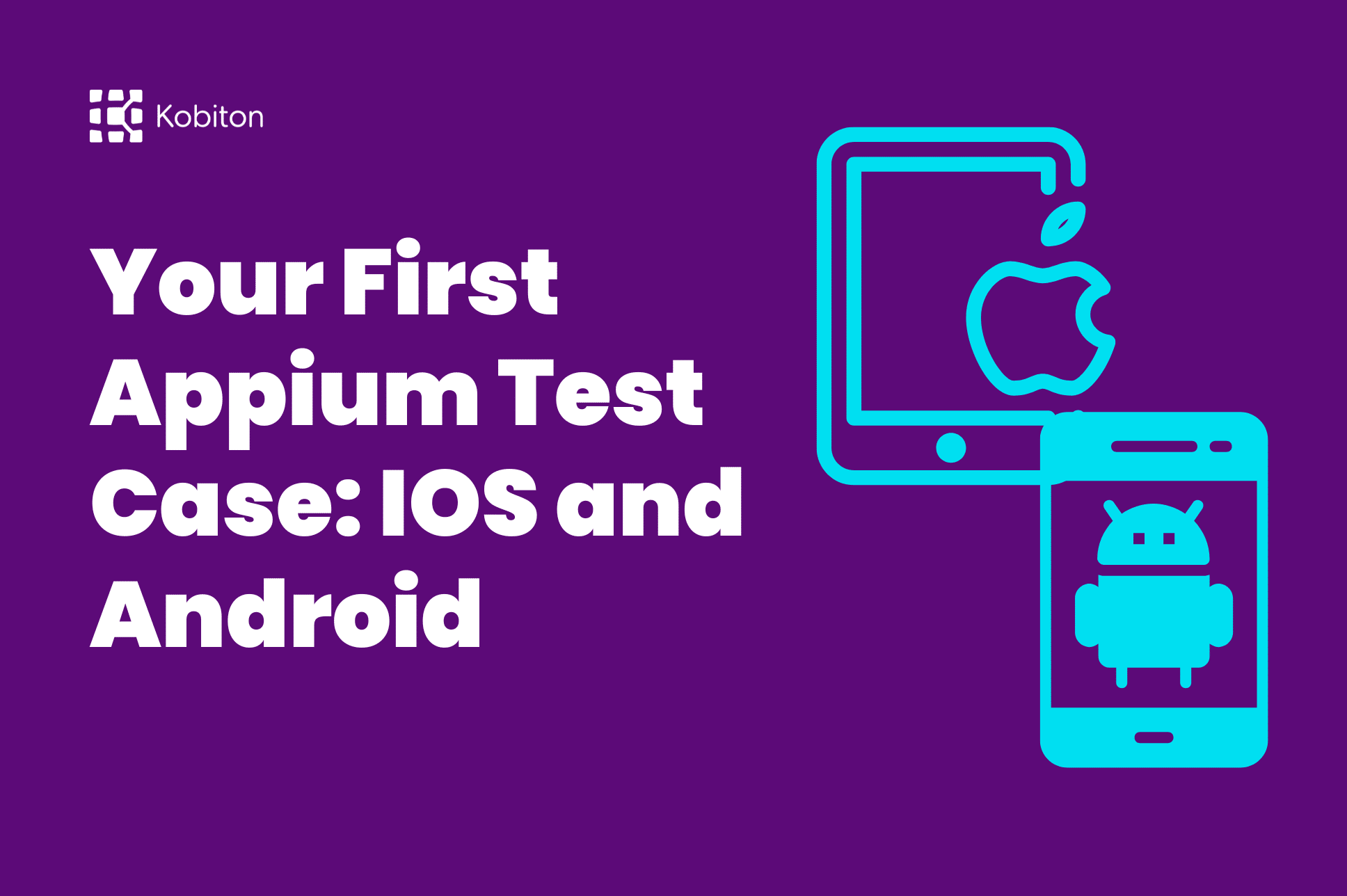
Your First Appium Test Case: IOS and Android

Sushma Kannedari
Apple’s famous buzz-worthy phrase “There’s an app for that” best describes the evolving context of mobile phone users globally. Today, there are at least 6.84 billion smartphone users and millions of progressive applications and software. Android and iOS share the lion’s share of this global mobile phone market.
Continuous mobile testing is imperative for each of these leading smartphone operating system providers. Mobile testing for applications refers to the rigorous process of testing mobile apps to ensure top-notch functionality, usability, and consistency.
As the number of mobile users grows exponentially, the demand for progressive apps will also shift. But how are developers and app testers for Android and iOS operating systems adapting to these shifts in mobile application testing to offer the best experience?
This article assesses the current app testing environment for both Android and iOS app testing. The article also considers the benefits, challenges, and other overall future app testing prospects of these giants.
There are salient differences between Android & iOS app testing in the way they approach their mobile testing procedures. Here’re some of the fundamental differences in testing between the two.
A core difference between Android and iOS app testing approaches is in the system type. Android uses the Linux OS, which is an open-source operating system. On its part, iOS is a closed-source operating system. In most cases, open-source system types are available for anyone to access and modify to suit specific needs.
On the other hand, iOS, as a closed-source system, makes it challenging to access and modify. iOS is proprietary software, which doesn’t allow easy access to the source code. Programmers may encounter notable challenges when trying to test the system or make changes.
Programmers consider Android OS the best system for advanced testing. The open-source system is more straightforward than the iOS.
The app testing process often depends on the targeted number of devices to be tested at a given time. Testing and updates for Android generally take longer and may be more tedious than iOS app testing. Currently, Android powers more than 2 billion devices globally. Google projects an overall target of at least 0.5 billion devices shipped to various markets annually over the next five years.
This means that testing for each device will remain a significant challenge given the magnitude of devices to be tested and the delicate nature of testing that calls for additional care.
Comparatively, the year 2021 witnessed the highest number of iPhones produced by Apple, which totaled 233.90 iPhones. While the numbers are equally significant, they are manageable compared to Google’s overwhelming numbers. As such, testers testing iOS devices may have the upper hand where testing quality is a concern.
Apple has better control over its iOS operating system. Apple is the sole manufacturer of all the different ranges of iPhone brands today. Being the singular manufacturer means that the process of design and testing for all the devices with an iOS operating system remains in the firm control of Apple.
Android, on its part, is developed by a consortium of developers. The team identifies itself as the Open Handset Alliance. While Google produces the most popular version, more than 1300 brands are under the consortium with at least 24000 different Android devices.
In essence, this means that the process of testing and modifying the probable errors is primarily affected. When the manufacturer doesn’t control the process, they must rely on the consortium to identify and approve modifications across the various devices. This often takes significant time and effort.
The role of software and application updates should be solely in the hands of the manufacturer. In the case of iOS, the manufacturer is Apple. This means it’s easy for Apple to constantly test for issues and concerns in their range of products and initiate updates.
Most Apple devices get updates almost within a month after every release. The process of testing, in this case, is straightforward, and updating the software is equally fast. Every tester undertakes the app testing process with the expectation that the release time will be fast and effective, which is often different with Android OS.
Generally, Android software and application updates take longer. The dynamics often result from the fact that the production, distribution, and testing funnel is notably convoluted. Testing for iOS and updating the specific software is often easier and faster.
When testing for mobile applications, screen resolution should be a key focus. The QA teams often focus on the device display sections. The screen size, resolution, and PPI density are all critical factors. It’s easier to test for iOS, considering that most Apple devices display similar screen layouts and sizes.
The QA teams do not have to consider varying scenarios when conducting tests. Comparatively, it takes many scenarios to test the different layouts and sizes presented for Android devices. The process of testing can easily expose the testing process to the risk of bugs and other related app inaccuracies.
The more screen layouts and resolution variances, the greater the probability that the test outcomes will face challenges. Android devices often grapple with this challenge.
Security is at the core of best practices when considering app testing. Android app testing is often exposed to varying security concerns partly because these devices have a predisposition to hacking. As noted earlier, Android users have unlimited access to the coding structure of the OS, considering that it runs on an open-source system.
Further, Android allows older versions to run on older devices, despite the rapidly changing cybersecurity landscape. Older versions may need more security capabilities to address modern threats. As such, testing for Android requires significant focus and attention to overcome the current security concerns.
The iOS apps are safer due to the secure nature of Apple OS. This makes the testing process more accessible and more accurate than when testing for Android.
Did you know that some applications on your mobile phone use more hardware resources than others? When testing for hardware specifications, the goal is to see how many devices can run the specific application.
Most devices running on iOS may be fewer than those running on the Android system. The fact that there are There aren’t as many varying devices for Apple, so not for all the different device types and hardware specifications when testing.
Android devices come in different hardware definitions, so it may take developers more time trying to test each hardware and their compatibility with specific apps.
Now that we understand the difference between the two core operating systems, the next question should be the best tools you can consider when testing.
Appium is considered one of the best testing tools for both iOS and Android. The tool follows WebDriver protocol. This protocol makes integrating other frameworks and tools easier in the testing process. The best part is that Kobiton, as a platform, currently supports the integration of Appium in running physical tests on all Android and iOS devices.
The Calabash test automation framework is another helpful tool to consider when conducting tests. The framework works perfectly with various options, including Ruby, Java, and . NET. QA teams can consider this tool whether testing for Android or iOS systems. The tool interacts with ease with both native and hybrid applications.
Also known as Selenium, Selendroid is a modern app testing tool that automates web application testing. The web driver is best for web browsers and is known for enabling rapid and recurrent quality web testing. With this tool, testers can control the UI of Android native and hybrid applications.
Mobile app testing will continue evolving in line with the changing scope of mobile technology and testing. As Competing technology leaders, including Google and Apple, work hard to improve their respective operating systems further, app testing tool developers must also work tirelessly to build tools and platforms that can quickly adapt to the changing scope of testing.
Some revolutionary shifts that are likely to change how Android and iOS approach the testing process include the introduction of AI, the emergence of the shift left testing, scriptless automation testing that minimizes human error, and cloud app testing.
The rise of the mobile-first approach in app testing is in response to the exponential growth in the ownership and use of smartphones. As Android and iOS operating systems continue to dominate this market, mobile app testing has cemented its place in app development.
At Kobiton, we are on the front row in ensuring the best app experience for all users. You can contact us today for any of your needs, including QA consulting, performance testing, and penetration testing.